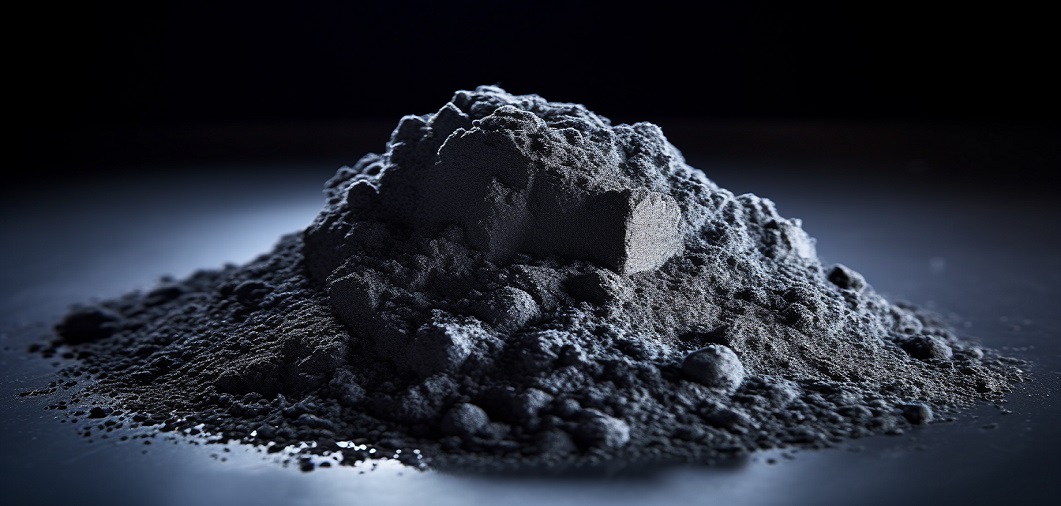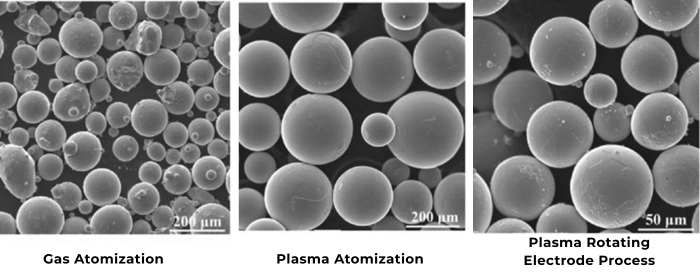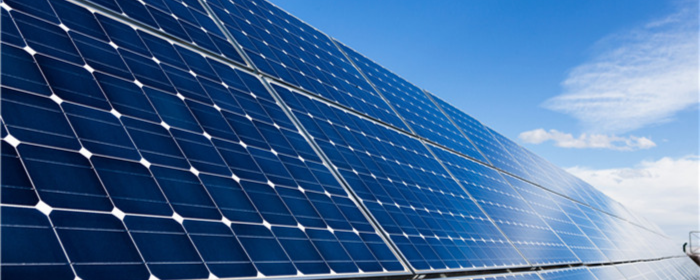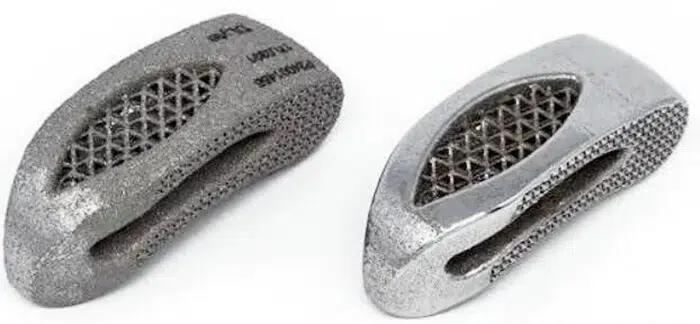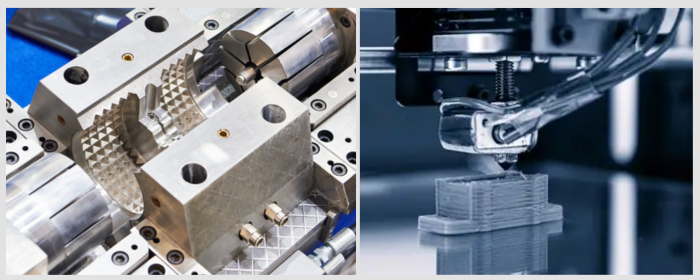

Laser cladding is a surface treatment. Its basic mechanism is that the pre-deposited or synchronously deposited alloy powder on the substrate surface is irradiated with a high-energy laser beam to produce rapid melting, spreading, and solidification to ultimately form a dense coating metallurgically bonded to the substrate. This technology is capable of preparing functional layers on material surfaces with excellent wear resistance, heat resistance, corrosion resistance, or oxidation resistance, significantly improving the service performance of the base material or surface repair and regeneration.
Currently, the technology is applied in surface modification and product repair to a great extent. The repaired parts can recover over 90% of their original strength, and the repair cost is less than 1/5 of the replacement cost. Most significantly, it reduces downtime, effectively addressing the crucial repair issues of primary rotating components of large industrial equipment. In addition, employing wear- and corrosion-resistant alloys via laser cladding on critical components can greatly extend their life without deforming them. For mold surfaces, laser cladding not only enhances strength but also reduces manufacturing costs by two-thirds and shortens the production cycle by four-fifths.
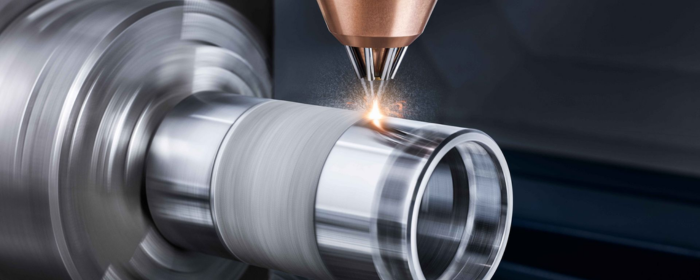
In comparison with traditional surface treatment technologies such as welding, thermal spraying, and electroplating, laser cladding possesses the following advantages:
|
Feature |
Laser Cladding |
|||
|
Dilution Rate |
Low |
High |
Moderate |
N/A |
|
Microstructure Density |
Dense |
Dense |
Porous |
Moderate |
|
Coating-Substrate Bonding |
Strong |
Strong |
Weak |
Weak |
|
Material Compatibility |
Wide range |
Limited |
Moderate |
Limited |
|
Particle Size |
Controllable |
Uncontrolled |
Limited control |
N/A |
|
Processing Quality |
High |
Moderate |
Low |
Moderate |
|
Controllability & Automation |
Good (3D capable) |
Limited |
Limited |
Limited |
In general, laser cladding is a high-tech surface modification and equipment repair technology, possessing significant theoretical and economic value in its R&D.
Laser cladding is a complex physical and chemical metallurgical process. The quality of the cladding layer is highly influenced by laser parameters, and the choice of alloy powder is also a critical factor.
Self-fluxing alloy powder is mostly iron-based (Fe), nickel-based (Ni), and cobalt-based (Co) alloy powder. The main feature of these powders is the presence of boron (B) and silicon (Si), which provide the self-deoxidizing and slag-forming characteristics. Additionally, their high chromium (Cr) content reacts preferentially with the oxygen in the alloy and the substrate surface oxides to form low-melting-point borosilicate slag, which floats on the molten pool and strongly suppresses the oxidation of the liquid metal. This procedure not only improves the wettability of the molten metal on the substrate but also significantly reduces inclusions and oxygen content in the cladding layer, enhancing its forming quality and providing it with excellent corrosion and oxidation resistance.
Self-fluxing alloy powders can be applied well to various substrates, including carbon steel, stainless steel, alloy steel, and cast steel, with dense cladding layers of low porosity and oxide content. However, when applied to sulfur-containing (S) steel substrates for cladding, sulfur will generate low-melting-point brittle phases in the interface, reducing bonding strength or causing delamination. Therefore, attention should be paid to the choice of suitable alloy powders.
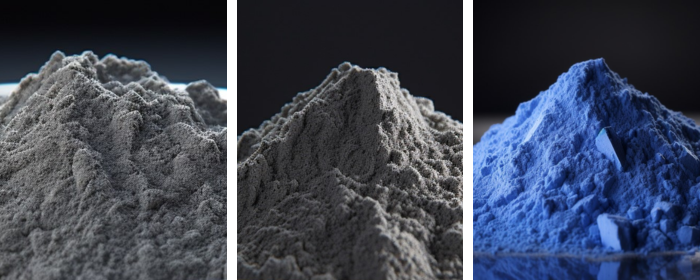
2.1.1 Iron-Based (Fe) Self-Fluxing Alloy Powders
Iron alloy powders are low cost and readily available, with high hardness and good wear characteristics. They are used in high-mechanical-requirement operations that are cost-sensitive, such as repairing and reinforcing mining equipment and agricultural equipment components. They have a thermal expansion coefficient similar to that of steel substrates, and thus low thermal stress upon cladding and reduced crack susceptibility. Further, hardness (up to 50-60 HRC) and wear resistance are also tunable in a flexible way by modifying carbon and chromium content.
However, these powders are poor corrosion and high-temperature performance powders and can be corroded or oxidized when they are placed in acidic or high-temperature environments (>500°C). Moreover, hard phases (e.g., Fe2B) may be produced during cladding, which reduces the toughness of the cladding layer and causes impact load-induced cracking. In addition, iron-based powders exhibit worse flowability than nickel- or cobalt-based powders, which may affect powder feeding stability and cladding layer surface quality.
2.1.2 Nickel-Based (Ni) Self-Fluxing Alloy Powders
Nickel-based alloy powders have good corrosion resistance, high-temperature oxidation resistance up to 800-1000°C, and fatigue resistance. They are more suitable for high-value applications, such as aerospace and energy, than iron-based powders. Their self-fluxing (B/Si elements) and wettability make it possible to create low-porosity, dense cladding layers with high compatibility with numerous substrates (nickel-based alloys and stainless steel amongst them). Standard NiCrBSi series are also suitable for enhancing corrosion resistance via the modification of chromium content.
But their cost is 2-4 times greater than for iron-based powders. Cladding layers from high-hardness nickel-based alloys (e.g., WC-reinforced composite powders) have high residual stress, potentially leading to substrate deformation or cracking.
2.1.3 Cobalt-Based (Co) Self-Fluxing Alloy Powders
Cobalt-based alloy powders exhibit excellent red hardness, wear resistance, and corrosion resistance to high temperatures (900-1100°C) and are thus applicable to severe conditions (e.g., aircraft engine seals and petrochemical valve applications). One typical composition is CoCrWB (e.g., Stellite 6), which can be hardened above 60 HRC when tungsten carbide (WC) is added as a reinforcement. Cobalt-based cladding layers possess a good metallurgical bond with substrates and much improved thermal fatigue life compared to iron- and nickel-based alloys. However, raw material cost is very high due to the limited availability of cobalt resources. Additionally, the biological toxicity of cobalt restricts its application to medical fields.
2.1.4 Other Metal Powders
Outside of the aforementioned classes, the other laser cladding material systems under research and development include copper-based, titanium-based, aluminum-based, magnesium-based, zirconium-based, chromium-based, and intermetallic compound-based materials. These materials leverage some of the alloy properties to achieve one or more functionalities, such as wear resistance, friction reduction, corrosion resistance, conductivity, high-temperature resistance, or thermal oxidation resistance.
Stanford Advanced Materials (SAM) supplies the aforementioned alloy powders. For inquiries, please contact our professional sales team for pricing information: Get a Quote.

Owing to their remarkable wear resistance, corrosion resistance, high-temperature resistance, and oxidation resistance, ceramic powders are typically utilized to manufacture wear- and corrosion-resistant coatings with high temperature. Ceramic powders are mostly in the form of silicide and oxide ceramic powders, though the latter prevails, examples being alumina and zirconia. Being lower in thermal conductivity and enhanced in thermal shock resistance, ceramic powders made of zirconia are preferably utilized to form thermal barrier coatings.
However, it should also be noted that the large discrepancies in thermal expansion coefficient, elastic modulus, and thermal conductivity between metal substrates and ceramic powders can result in defects such as cracks and pores in the cladding layer, causing deformation, cracking, or delamination when in service.
Composite powders are powder systems that are mixed or blended from hard ceramic materials with high melting points and metals. Composite powders can produce ceramic particle-reinforced metal matrix composite coatings through laser cladding, taking advantage of the processability, strength, and toughness of metals and the oxidation resistance, high-temperature resistance, corrosion resistance, and wear resistance of ceramics.
The blending of metals and ceramics in composite powders significantly enhances coating performance as well as protects carbides from high-temperature oxidation and decomposition. Moreover, the coatings formed have extremely high hardness and wear resistance, which is a research priority in laser cladding technology.
Ceramic particles in composite powders can be introduced to the cladding process by:
In laser cladding, the layer of metal coating protects the carbide core well and saves it from direct exposure to the strong laser beam. This avoids or prevents burning, decarburization, and volatilization of carbides.
By depositing alloy powder onto workpiece surfaces using laser cladding, high-performance alloy surfaces can be created on inexpensive metal substrates without modifying the base material properties, thus maintaining low production costs. The properties, cost, and performance of different cladding materials vary significantly, allowing for focused selection according to individual processing needs.

